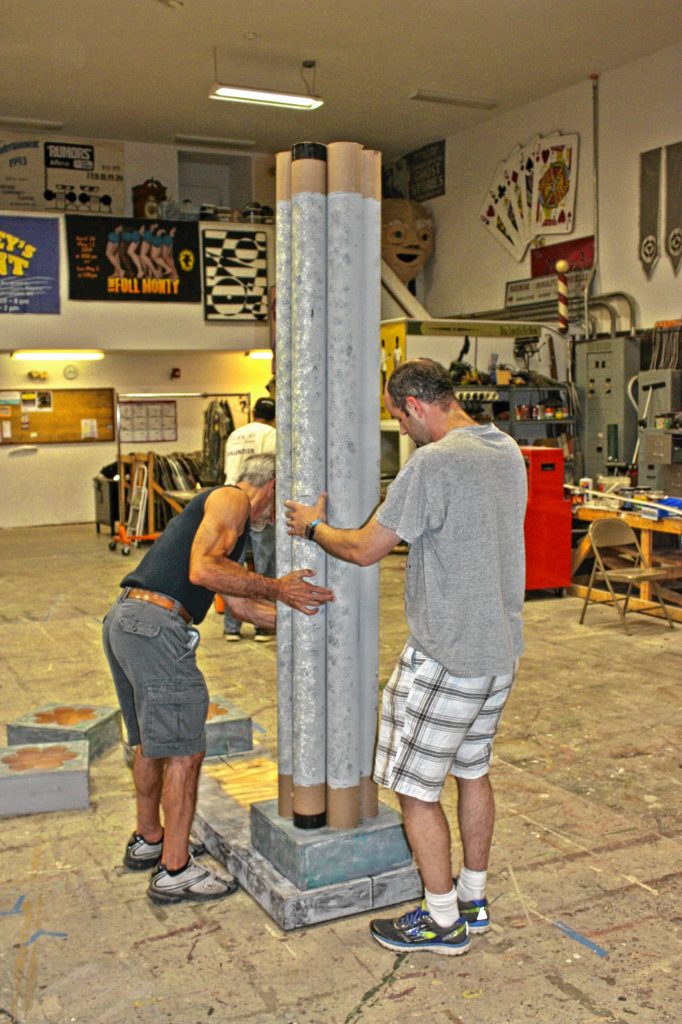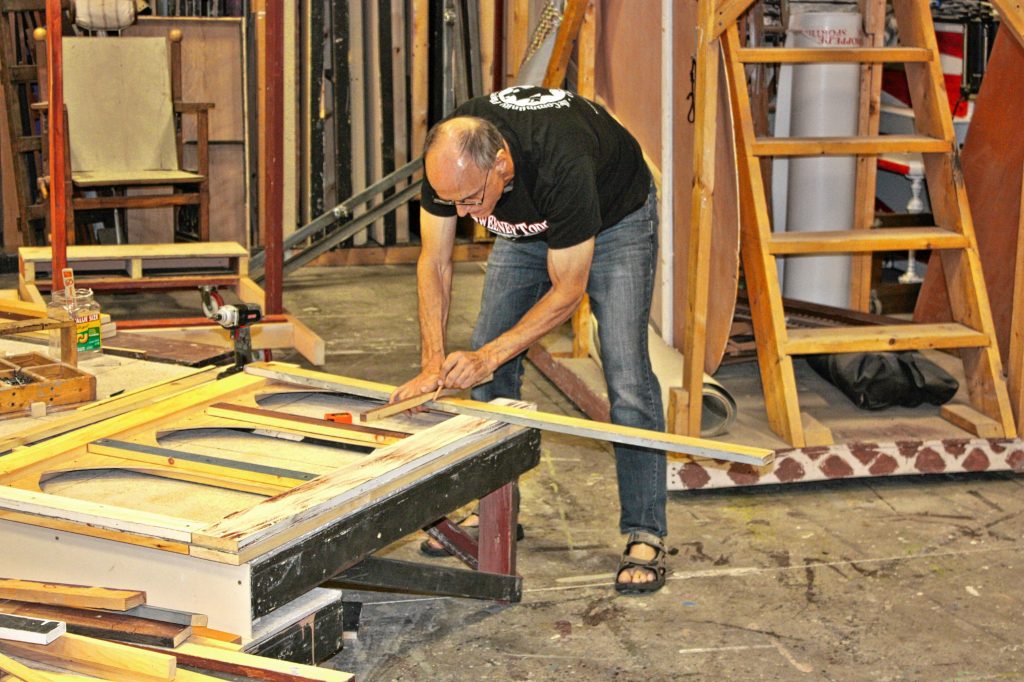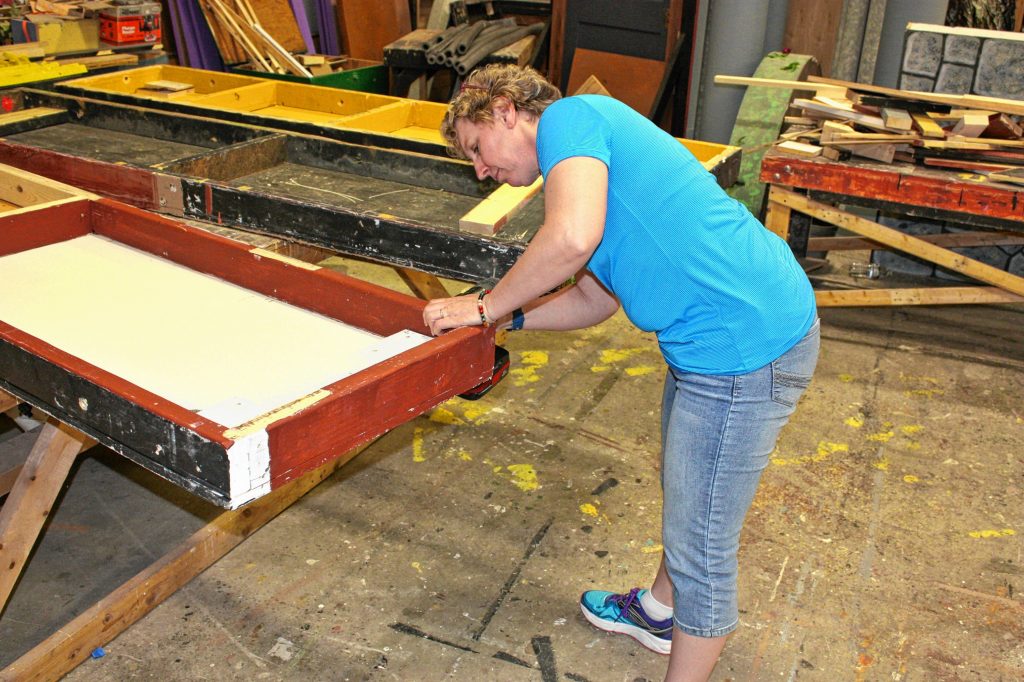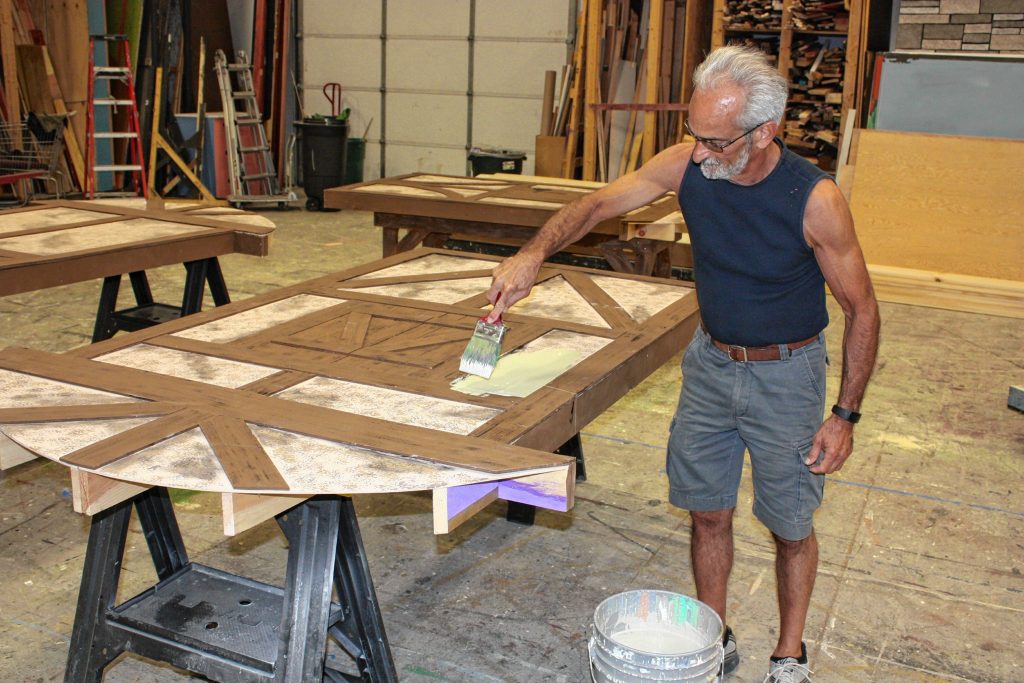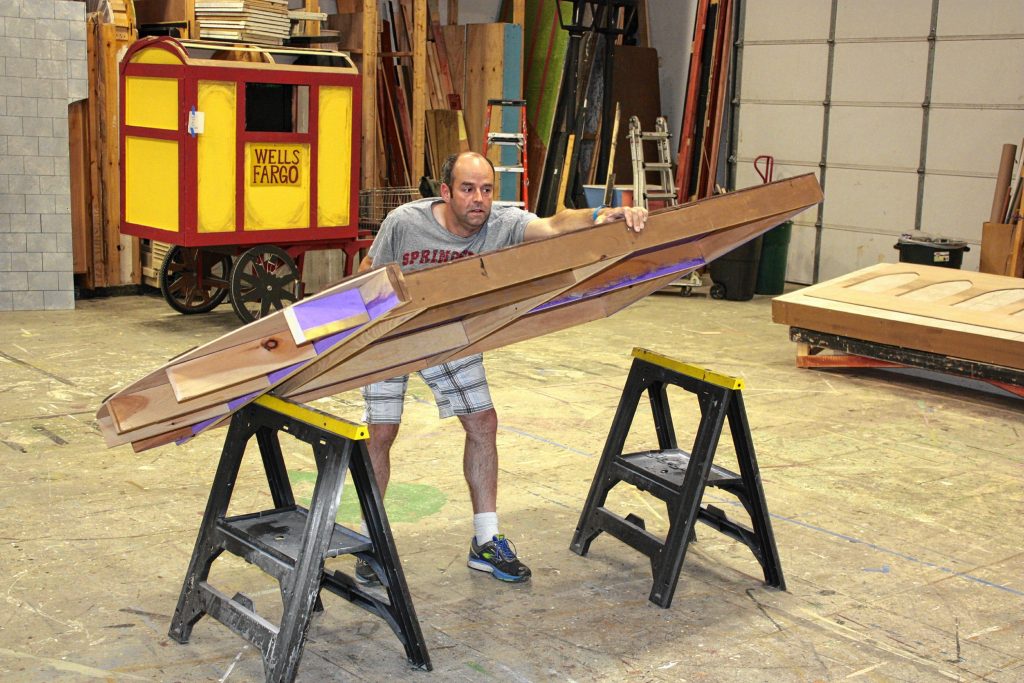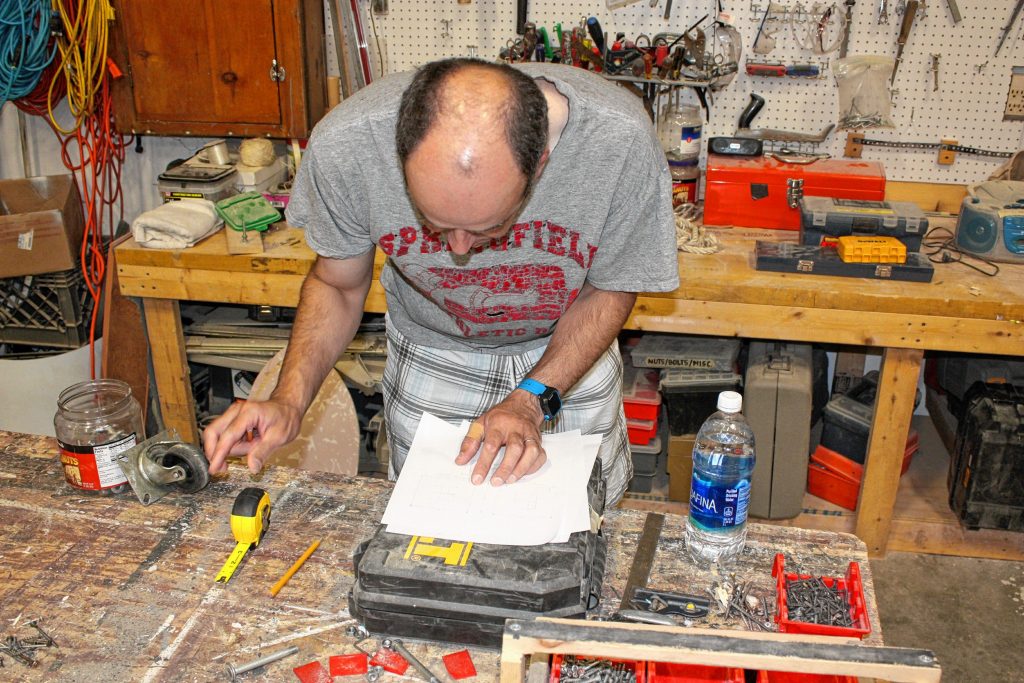Part of the fun of taking in a stage production is being able to fully immerse yourself in another world for a few hours and forget about the real one outside the auditorium doors. You can’t really get that immersive experience unless the stage is adorned with a nice, well-made set.
While the acting, singing and dancing may be the main attractions of any stage show, it can sometimes be easy to overlook the set – after all, the audience is there to see action, not set pieces. The set, though, is one of the most important parts of any show, as the pieces that fill the stage really let you know that you’re watching, say, The Wizard of Oz as opposed to A Christmas Carol. Without any set pieces, every show would look the same, except for maybe the costumes.
We wanted to learn a lot more about what goes into building the set for a stage production, so we stopped by the Community Players of Concord studio last week, where volunteers were working on pieces for an upcoming youth production of The Wizard of Oz (and a little bit of side work on a production of The Hunchback of Notre Dame).
When we walked into the warehouse-like space, the place was abuzz with activity. Someone was looking over some plans. Someone else was drilling something. Another person was rummaging through a pile of pieces of wood, searching for the right size. Yet another volunteer was preparing a long, slim piece of wood to run through a table saw.
“We’re here to make our children happy,” said volunteer Lisa Cohen, who was using a drill to fasten some wheels to a wooden platform.
Cohen’s daughter will be in The Wizard of Oz, which will be her fourth play. Cohen and her husband, Mark Vincent, have volunteered in some capacity for every show so far, taking time out of their evenings to help everything come together before the main event – in this case, Oct. 13 and 14, the only two nights The Wizard of Oz will be performed.
It was the first build night of the season last Wednesday, so naturally everything was in the early stages.
“We’re changing these existing houses into the Munchkin village,” said Kevin Belval, the master builder on the project. There are limited materials – and a limited budget – to work with, so the crew often relies on taking previously used set pieces and tweaking and repurposing them for a new show.
One notable recycled set piece is a covered wagon (see top photo). It was used last year in The Shining Princess of the Slender Bamboo to carry the princess, then as a Wells Fargo coach in a production of The Music Man. Now, it will be turned into Professor Marvel’s fortune-telling wagon for The Wizard of Oz.
Although the show isn’t until mid-October, there’s not really a ton of time to work on the set. There will be three more build nights (a couple hours long each) in July and probably four in August, then everything needs to be painted. Director Karen Braz said it will be a whole different crew who will work on the finish painting – “We’re not artists,” she said.
While the volunteers we met last Wednesday handle the construction and base coat painting, they recruit people from the community who specialize in artistic painting to put the finishing touches and ornate details on the finished set pieces. Luckily, Braz said, there are a lot of extremely talented parents out there who volunteer their time to make the set come alive.
Some of that base coat painting was going on last week, as co-producer, set designer and lighting designer Steven Meier was applying some green to a door that will be part of Munchkinland. Do producers usually have to deal with painting?
“People always ask, ‘What does a producer do?’ A producer does everything,” Meier said.
Yep, in the world of community theater, it really is a community effort. Pretty much everyone who works behind the scenes has multiple responsibilities, and everyone helps each other out. There’s also a whole lot of collaboration that has to go on in order for everything to go off smoothly.
“Steven and I have been meeting to talk about set design for the past few weeks,” Braz said. “It’s a lot of collaboration, emails, meetings. There’s no way to do it any way other than collaboration.”
That includes on the digital side, too.
That’s right, it’s not just drills and saws and paintbrushes that go into creating a set – in the case of this production of The Wizard of Oz, there’s a computerized element to it, too.
When we first arrived at the Players studio, David Peck – who you might remember as half of the cast in two previous productions of Gutenberg! The Musical! – was working on a small set piece for a production of The Hunchback of Notre Dame. “I’m just in tonight to get this done,” he said.
But he also has a big role behind the scenes of The Wizard of Oz, as he’s been working on creating digital images that will be projected onto a screen at the back of the stage during the show. The idea is to use digital projections that can be changed with the click of a mouse rather than gigantic murals that take a lot of time to create and a lot of time to change out during a show. It’s becoming more and more common in theater, and this will be the first time the Players will employ this technique.
Just because it exists on a computer and not on a big canvas or piece of wood doesn’t mean it’s easy. Peck had already put in about 80 hours creating a handful of backdrops, and he still had plenty of work ahead of him. Everything is mocked up first, then the crew has to buy the rights to certain images and the process starts over again. It’s all in the name of making a good show.
Meanwhile, the rest of the crew was busy breaking a sweat, including Belval, the master builder. While Braz is the director of the whole operation, Belval is in charge of the set construction.
“Steve designed it, and my job is to take the drawings and create them,” Belval said. “I have to figure out how to build it for the least amount of funds, with the focus on fast breakdown and setup.”
That last part is important. Speed of scene changes is a big factor in designing pieces of the set. Pieces need to be able to come apart and move in a matter of seconds – Belval likes to aim for a target of 10 seconds – so the audience isn’t sitting there for 5 minutes at a time waiting for people to change the scenery on the stage, killing the buzz of the moment in the process.
Belval has been with the Players for about 17 years, and everything he knows about the world of theater and set creation he learned in the field – he had no prior carpentry or theater experience before starting with the Players.
“I didn’t even take shop in high school,” he said. “I took home-ec.”
For now, the volunteers at the Players have their work cut out for them. By Oct. 7 or 8, every piece needs to be built, painted and moved into the theater at the Concord City Auditorium. There will be a few rehearsals to iron out any wrinkles, and before you know it, it will be Oct. 13 and the curtain will open, showing the audience all the hard work that went into making the world of the play come alive.
Get your tickets at communityplayersofconcord.org/tickets or at the box office starting Oct. 11. And when you go to the show, make sure you take notice of the set, and give a nice hand to the folks who made it all come together.

